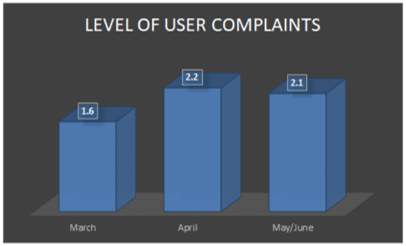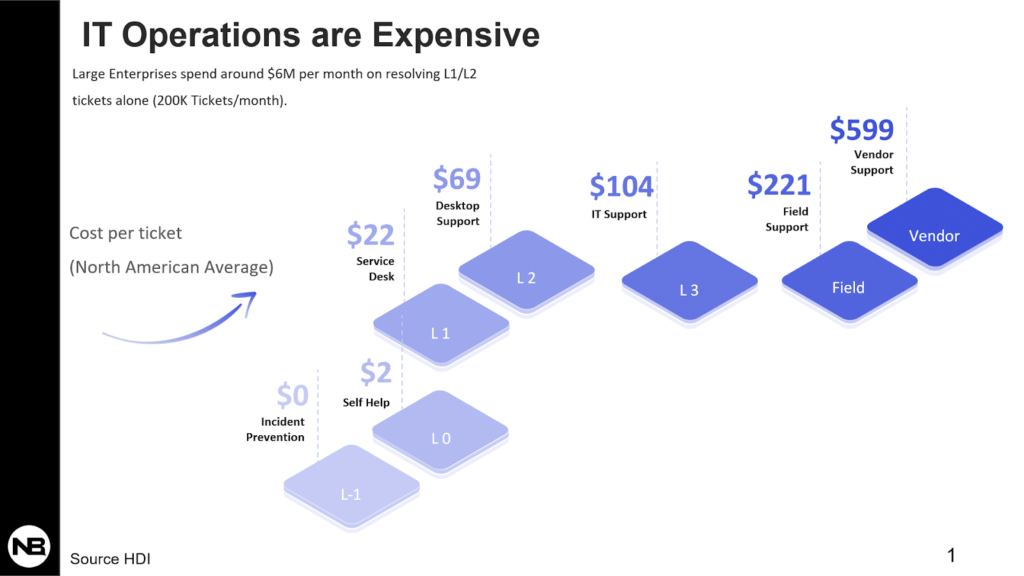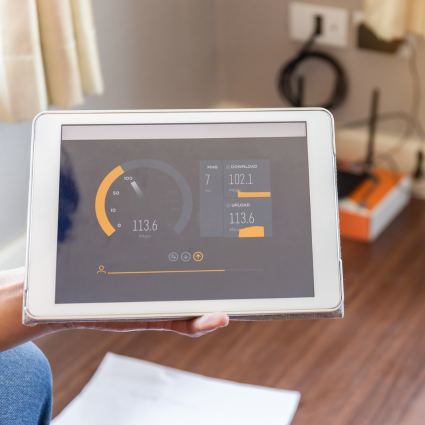Remote work can substantially reduce office expenses
Employees can enjoy the zero-commute lifestyle. Companies can enjoy lower office costs, ranging from reduced power and AC bills to smaller leases (or even no leases), especially in high cost cities like San Francisco and New York City.
Perhaps your organization is positioned to dramatically reduce office expenses and send worker job satisfaction to new heights. But there are other factors to consider, including one department often taken for granted.
What about the Help Desk?
Before you jump for joy there is at least one strategic consideration: your help desk. We surveyed networking execs at the onset of the COVID remote work shift and saw a notable jump in tickets reported by users (see 3 Key Findings about Network Monitoring during COVID-19).
If you didn’t get a chance to attend our June webinar on the unique demands of remote worker (#WFH) network management and monitoring you can now attend the on-demand session or read the slides with highlights.

It wasn’t just our survey, however. We’ve been hearing from organizations around the world in the last several months: #WFH is putting a serious strain on help desks.
Corporate Networks Had Clear Advantages for IT Support
One of the benefits of employees being concentrated into office has become clear: IT and networking teams have a high level of control over networking costs and the online employee user experience. Remote workers depend more on VPNs and ISPs and a host of factors beyond company control.
The Remote Office is the New Edge and the Network Management Implications are Profound
Here is a look at the traditional support costs, before employees en masse started working from home. See the jump in field and vendor support costs and simply multiply those costs by the increased incidence we’ve discovered from research and new customers.

Field Support is More Expensive
It is pretty easy to understand why field support costs are higher. Besides the lack of direct control cited earlier there can be travel costs, negotiations with other vendors/service providers and even local outage issues that could be very hard to diagnose with traditional monitoring tools. Remote workers may have to call in and engage your highly skilled pros in a “play by play” guessing game ruling out the most likely factors.
In an earlier blog on WFH issues we talked about the productivity issue from the remote worker’s perspective- if the network team doesn’t have the right monitoring tools to diagnose end user experience issues:
With #WFH the pros who are armed with tools to track switch/router issues may not have ANY idea why you cannot access the internet or a cloud server. They may not even be able to replicate your experience or discover an intermittent issue. It might not even be your service provider.
The New Edge Cannot be Monitored by Old Tools
Field support is already very expensive. Desktop support in the office isn’t bad, but once you get to the field and vendor support scenarios things can get quite expensive. A company with a few hundred (or worse, even thousands) remote workers could see help desk ticket costs skyrocket, even with just a slight increase in user-generated tickets. Yet our research showed that the jump is significant and appears to be getting worse as more employees work remote. Three clear findings emerge:
- The remote office trend is exposing a troubling new reality: network teams don’t have the visibility and control at the edge (which network engineers have for the office network) needed to effectively support remote user issues.
- Remote workforce models significantly increase user complaints and the time and resources required for root cause analysis and resolution.
- Traditional monitoring tools that track network device status need to be augmented by more advanced tools purpose-built to monitor user experience at the new edge: the home office.
This makes remote user network monitoring tools even more valuable than traditional tools deployed back at the office. Why? Because they’ll be able to diagnose problems even faster, even if they’re not related to the network. Otherwise, much of the cost savings of #WFH could be consumed by field support, including truck rolls by your tech support or, even worse. third parties hired to send technicians to your employees’ homes in the middle of a pandemic.
Contact us and we can help your team stay on top of remote worker help desk tickets, including resolving them with minimal time and travel. We’ve helped customers reduce their average root cause analysis time by more than 65%.





